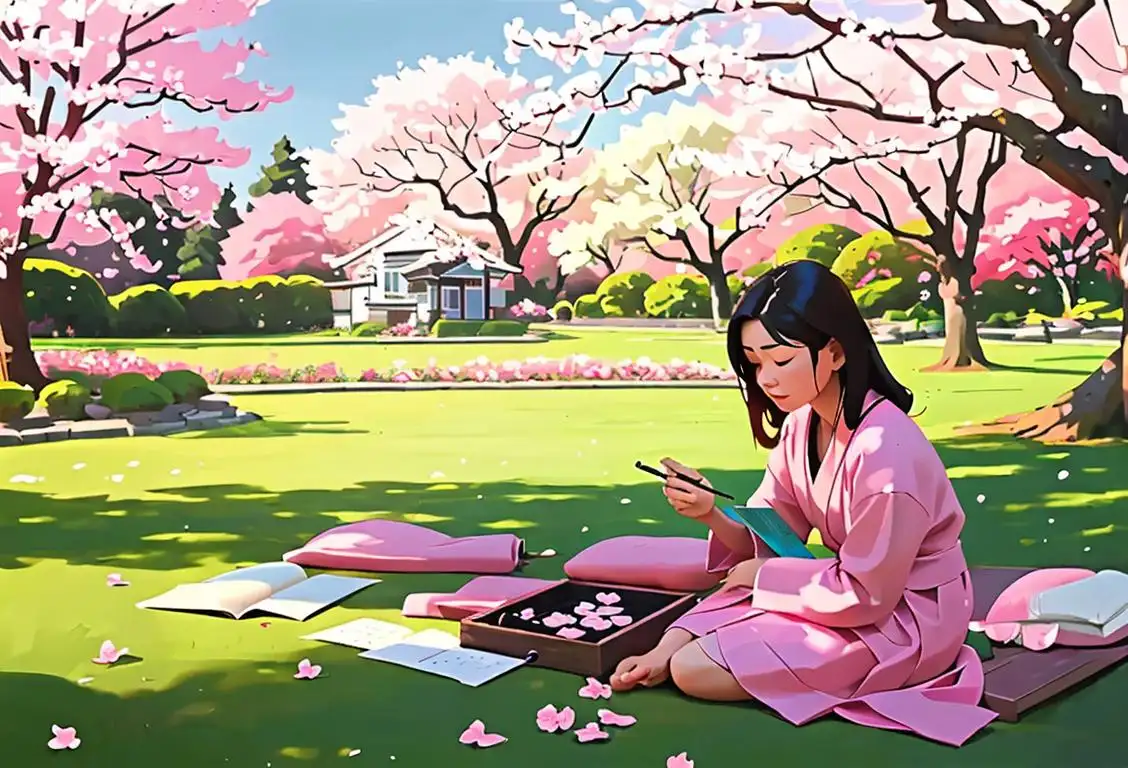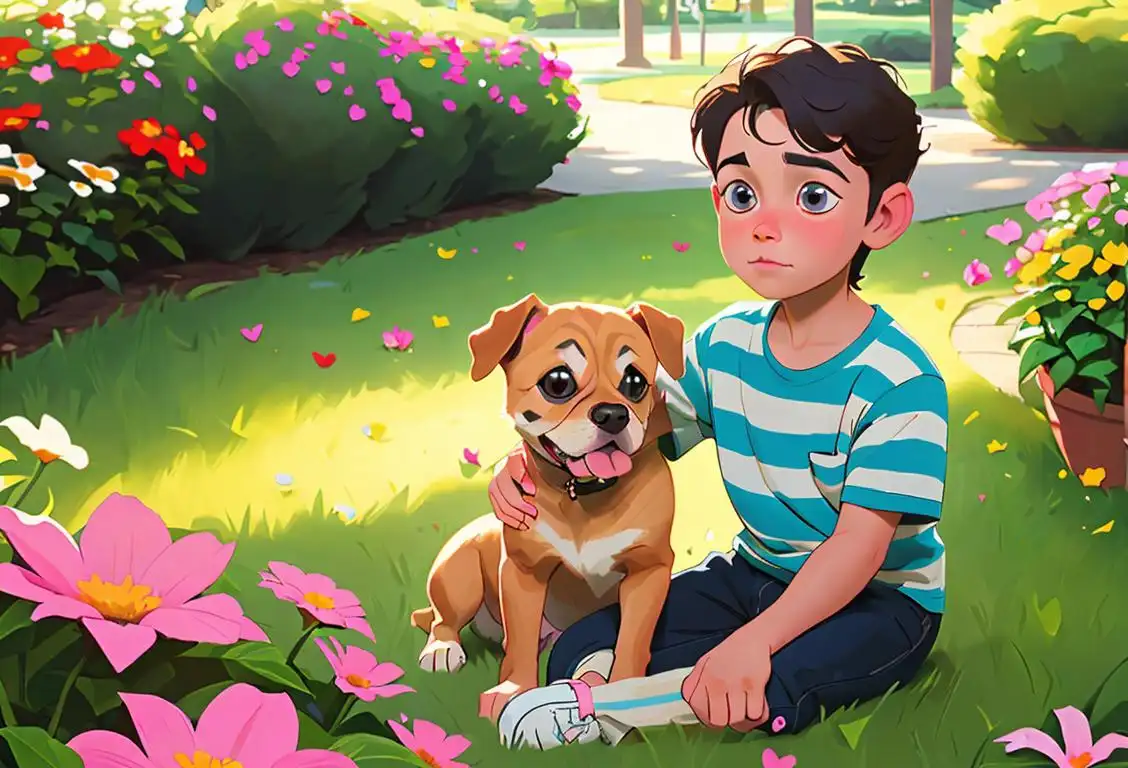National Haiku Appreciation Day

Welcome to National Haiku Appreciation Day! Get ready to immerse yourself in the zen-like beauty of this ancient Japanese form of poetry. Whether you're a seasoned poet or just someone who enjoys the simplicity of haikus, this day is all about celebrating and appreciating the power of these small yet mighty verses. So grab your pens, clear your mind, and let's dive into the captivating world of haikus.
When is Haiku Appreciation Day?
It's national haiku appreciation day on the 17th April.
A Brief History of Haiku
Haikus have come a long way since their origins in 7th century Japan. These short and evocative poems were traditionally composed of three lines, with a syllable pattern of 5-7-5. They were often inspired by nature and aimed to capture a single moment with deep emotions. Over time, haikus spread around the world, evolving and adapting in different cultures.
In the modern era, haikus have found a special place on the internet. With the rise of social media, poets and enthusiasts from across the globe have connected virtually to share their poetic creations. Twitter, with its character limit, has become a popular platform for posting haikus, challenging poets to condense their thoughts into 140 characters or less.
Haikus in the Digital Age
Thanks to the internet, haiku enthusiasts can now tap into an endless well of inspiration. Online communities, forums, and websites dedicated to haikus have sprouted up, allowing poets to share their work, receive feedback, and engage in discussions. It's a vibrant online ecosystem where words and emotions intertwine.
One particularly popular online event is the Haiku Deathmatch, where poets compete head-to-head to see who can craft the best haiku. The battles are fierce, and the creativity is astounding. It's a testament to the enduring appeal of haikus in the digital age.
National Haiku Appreciation Day: How to Celebrate
Now that you know the history and influence of haikus, it's time to celebrate National Haiku Appreciation Day in grand poetic style. Here are a few ways you can immerse yourself in the beauty of haikus:
- Create your own haiku: Channel your inner poet and try your hand at crafting a haiku. Remember, three lines, 5-7-5 syllable pattern, and let your creativity flow.
- Organize a haiku reading: Gather some friends, family, or fellow haiku enthusiasts and take turns reading your favorite haikus. It's an intimate and soulful form of expression that will bring people together.
- Explore online haiku communities: Join a haiku forum or visit websites dedicated to haikus. Engage in discussions, share your work, and discover the amazing talent out there.
Spread the Haiku Love
Remember to spread the haiku love beyond National Haiku Appreciation Day. Share your favorite haikus on social media, inspire others with your words, and keep the beauty of haikus alive throughout the year.
History behind the term 'Haiku Appreciation'
1899
The Birth of Haiku
In 1899, the term 'haiku' was coined by the Japanese poet Masaoka Shiki. Haiku is a traditional form of Japanese poetry consisting of three lines with a 5-7-5 syllable pattern. It was derived from an earlier form of poetry called 'hokku', which was the opening stanza of a collaborative link-verse poem known as 'renga'. Shiki popularized the term 'haiku' to represent standalone poems that convey a single vivid emotion or observation in a concise and evocative manner.
1924
Haiku in English
In 1924, a pivotal event occurred in the history of haiku appreciation. A British poet named Harold G. Henderson published the book 'An Introduction to Haiku: An Anthology of Poems and Poets from Basho to Shiki,' which introduced English-speaking readers to the beauty and essence of haiku. This book played a significant role in promoting haiku as a respected form of poetry outside of Japan and sparked a growing interest in haiku appreciation among Western audiences.
1968
Haiku Journal Launch
In 1968, the first journal dedicated solely to haiku and related forms of poetry, called 'Haiku Journal,' was launched in the United States. This marked a significant milestone in the history of haiku appreciation, as it provided a platform for poets and enthusiasts to share their haiku and literary discussions. The journal became instrumental in fostering the growth of haiku communities and promoting the appreciation of haiku as a distinct art form.
1986
Haiku in Schools
In 1986, the Haiku Society of America initiated the 'Haiku in Education' program. This program aimed to introduce haiku to students and educators across the United States, fostering an understanding and appreciation for this concise form of poetry. The program included haiku workshops, competitions, and educational resources, which contributed to a wider recognition and acceptance of haiku in school curricula, further popularizing haiku appreciation.
2013
Global Haiku Communities
In 2013, the internet played a pivotal role in connecting haiku enthusiasts from around the globe. Online platforms, such as Haiku Foundation and various social media communities, emerged, fostering a vibrant and diverse global community of haiku writers and appreciators. This interconnectedness has facilitated the exchange of haiku, ideas, and interpretations across cultures, enhancing the appreciation of haiku as a universal form of expression.
Did you know?
Did you know that the world's shortest haiku was written by the legendary Yosa Buson? It consists of only six letters and reads: 'Old pond, frog jumps. Splash! Silence again.' It's incredible how such few words can conjure up profound imagery!Tagged
awareness funFirst identified
17th April 2019Most mentioned on
17th April 2019Total mentions
32Other days
Nurses Day
Former Prisoner Of War Recognition Day
Press Day
Handloom Day
Heroes Day
Memorial Day
Dance Day
Bestfriends Day
Liberation Day
Love Your Pet Day









